|
סמלי ישראל
sim-ley yis-ra-el Israeli Symbols  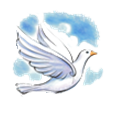 yonim (pl.), doves. The dove is a symbol of peace from the biblical story of Noah’s ark. Noah released the dove to find dry land after a flood, and the dove returned carrying an olive branch, signaling that the flood had receded.
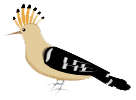 The Hoopoe was selected by thousands of Israelis to be Israel’s new national bird. The election was held by the Society for the Protection of Nature in Israel.
The selection process started in Tel Aviv University with a long list of 50 different birds.
The Hoopoe won the contest with 35% of the votes.
Ornithology is one of the main assets of Israel with 500 million birds passing through the skies annually.
 rimonim (pl.), pomegranates. Pomegranates are native to the Middle East and are rich in anti-oxidants. The pomegranate fruit is a symbol of fertility in the Bible and is one of the seven species of Israel. Each fruit is said to contain 613 seeds just as there are 613 good deeds, mitzvot, in tbe Bible. Pomegranates are eaten on the Jewish New Year, Rosh Hashana, to wish for good deeds and a year as plentiful with goodness as the seeds of the pomegranate.
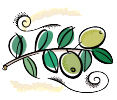 zeytim (pl.), olives. An olive branch is a symbol of peace from the biblical story of Noah’s ark. Noah released the dove to find dry land after a flood and the dove returned carrying an olive branch. Olives are one of the seven native ancient Israel fruits. The national emblem of the State of Israel includes a Menorah, flanked by two olive branches as a symbol of peace. Olives bloom in the spring and can grow to be over 1,000 years old. Olive oil used to light the menorahs and food cooked in oil are traditions of Chanukkah in memory of the oil that was used in the Temple at the time of its rededication. 89% of Israelis use olive oil for cooking and seasoning, such as in the famous Israeli salad.
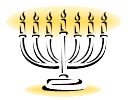 The menorah (a seven-branched candelabrum) was used to light the ancient Temple in Jerusalem and has been a symbol of enlightment since ancient times.
The Emblem of Israel, since it was founded in 1948, has a menorah surrounded by an olive branch on each side, and under it the writing of the Hebrew word for Israel. The background of the emblem is blue and the menorah and olive branches may be white or gold.
 The Israeli Flag was inspired by the design of the tallit (the Jewish prayer shawl). The flag has a blue Star of David in the middle between two blue horizontal lines on a white background. The blue represents the color of the sky, loyalty and wisdom. The star represents a shield that protects King David. The white represents purity, honesty, and peace. It became a Jewish symbol in late medieval times in Prague.
 The flag of Jerusalem, created in 1949, is a shield with the Lion of Judah between two horizontal blue lines on a background of a stone wall representing the Kotel (the wailling wall or the western wall), flanked on each side by olive branches. The word Jerusalem in Hebrew is written above the shield.
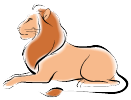 The Lion of Judah was the symbol of one of the twelve Israelite tribes, Judah, in the Book of Genesis of the Hebrew Bible. The lion symbolizes fighting and protecting the Jewish holy places and as such it is depicted on the flag of Jerusalem.
 A mezuzah is a case that is placed on the doorposts of Jewish homes. In the case there is a rolled up handwritten scroll with the words of the prayer Shema (hear in Hebrew).
 Tallit is a Jewish four-cornered shawl that is worn while praying. It has tzitzit (fringes) on each of its four corners. The tzitzit is worn as a reminder of the 613 commandments. The tallit is often used in Jewish wedding ceremonies as a wedding canopy (chuppah). The tallit is usually worn over the shoulders, but some cover their head with it.
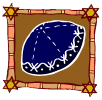 Yarmulke from Yiddish (kippah) is a Jewish head covering. In the eastern cultures it is a sign of respect to cover the head during prayer.
 Magen David (Shield of David) is also known as the Star of David, is the most common symbol of Judaism and appears on the flag of the state of Israel. Synagogues in the 17th century identified themselves as Jewish houses of worship with the sign of Magen David.
 The Chai (life) symbol is usually seen on necklaces and other jewelry. It depicts two Hebrew letters Cheit and Yod attached to each other. It focuses on the importance of life in the Jewish culture. The numeric value of the word Chai is 18 and many donations are given in multiples of 18.
 The name hamsa comes from the word five in Arabic. It is a decoration charm in the shape of a hand that is popular throughout the Middle East and North Africa.
The hamsa can be decorated with fine stones, eye shapes, fish or doves. It is used as a charm to defend against the evil eye and it is hung in houses or on necklaces and key-chains. It symbolizes hope, peace and prosperity.
 The national anthem of Israel means “the hope” to express the yearning of Jews everywhere to be free to worship Judaism in their land – Israel and its capital Jerusalem. It was written by Naphtali Herz Imber, a secular Galician Jew from Zolochiv who immigrated to the Ottoman Palestine in the early 1880s.
He wrote it at the same time that Petah Tikva was founded, which was one of the first Jewish settlements. It was adopted as the anthem by the Zionist Movement at the First Zionist Congress in 1897.
|